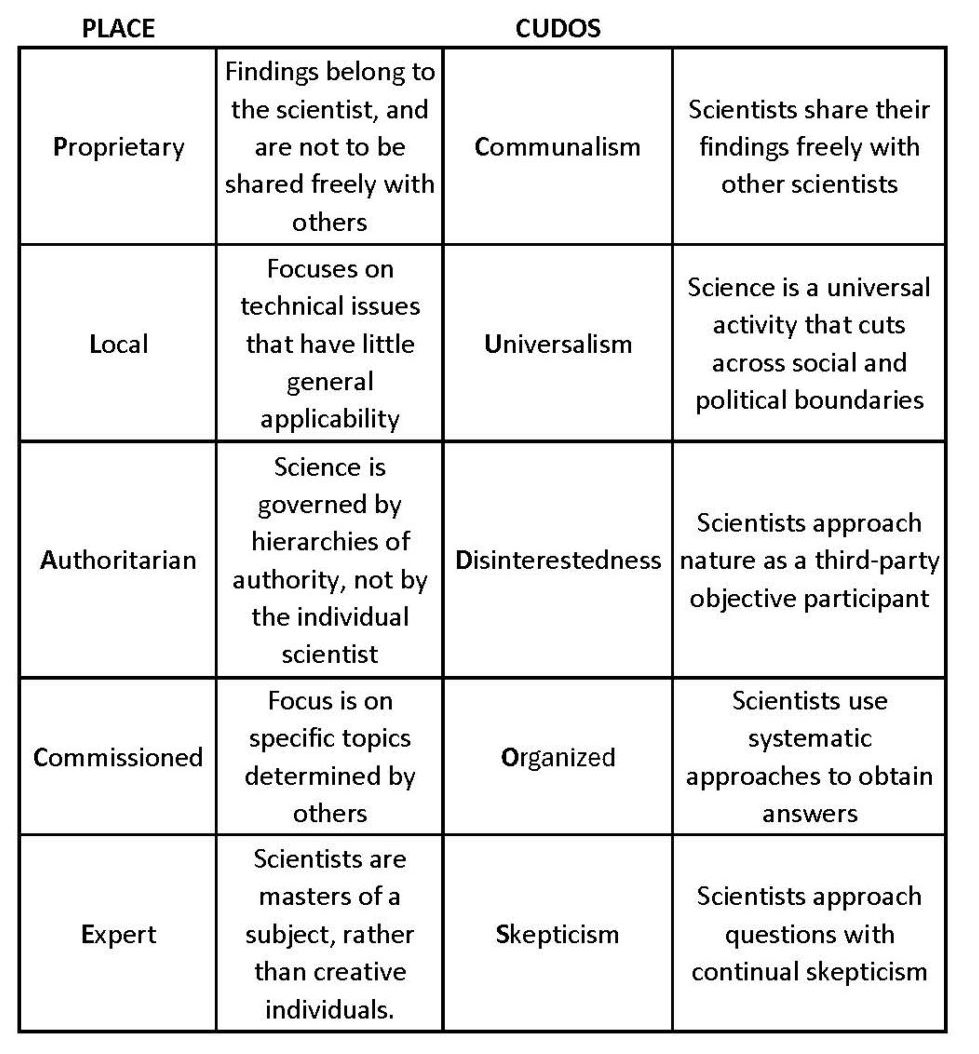
Fraud was uncovered last week at the Regeneron International Science and Engineering Fair, the world’s biggest science fair, put on by the non-profit group Society for Science. The 17-year-old winner beat out nearly 1,700 competitors to take home a $50,000 cash prize, along with an additional $5,000 bonus, the hopeful start of an impressive science career about to be launched.
Well, it turns out that the science that won the prize was faked.
Chris Brunet summarized the evidence for the fraud in his Karlstack substack, explaining that an anonymous group of scientists documented their findings in a Google Docs dossier and sent it as an open letter to the Society for Science. As one commentator on X, cs_throwaway888, put it, the “direct evidence [of fraud] is beyond damning.” I agree!
But damning of who?
Indeed, the kid bears responsibility for his actions—once his fraud was exposed, he fessed up and returned the prize. That’s not the real story, though. A 17-year-old doing something stupid and irresponsible is not really news—what 17-year-old hasn’t? Even stranger, the real story doesn’t even lie in the dereliction of his mentors and the science fair judges who failed to pick up the fakery.
The real story is that dishonesty of this sort has become baked into the entire culture of science. There’s even a handy acronym to describe it: PLACE (Table 1).
Dishonesty in science is a jarring thing to assert because most people look at science as a trustworthy quest for knowledge. There’s also an acronym for that: CUDOS (Table 1). Fraud in a culture of CUDOS is surprising and disturbing, an unexpected anomaly. Where PLACE dominates, however, fraud is to be expected.
When PLACE trickles into science fairs, it should surprise nobody that fraud rears its ugly head. I suspect there’s a lot more fraud to be found in science fairs, but nobody wants to look under that rock.
To be upfront, I’ve long had a jaded view of the science fair. This wasn’t always the case, however. When I was a biology professor, I made it a point to judge local science fairs. I believed that encouraging students interested in science was valuable and that the best way to discover scientific talent was to see what a student could do with a scientific project. Science fairs then seemed to me to be an effective way to accomplish both goals.
But with experience, I came to conclude that they accomplish neither and, in fact, actively work against both.
I spent a lot of time wondering why, and eventually, I came to a realization. I had always assumed science fairs existed to cultivate the ethos of CUDOS. I had failed to see how the rising tide of PLACE had transformed the science fair into a form of performance art, a rough mix of American Idol and Master Chef Junior. The modern science fair is now a masquerade, PLACE hiding behind an illusion of CUDOS.
You can see this in two documentaries centered around the annual International Science and Engineering Fair (ISEF), where the recent fraud was uncovered.[1] Both documentaries are celebratory, following the journeys of several students worldwide as they competed their way from their local science fairs up to the “Big Show” (ISEF) in pursuit of the top prize of “Best in Fair.”
Even for someone with my jaded heart, it’s impossible not to wish these kids well. Their stories are compelling; it’s easy to feel happy for them as they reap rewards they have worked so hard to attain and admire their good-natured stoicism at the disappointment that most will face. Yet, the documentaries illustrate—inadvertently, I suspect—the telltale signs of PLACE at work.

Table 1. PLACE and CUDOS Compared[2]
When science fairs began in the 1920s, CUDOS seemed to prevail.[3] Science fairs were local affairs, grass-roots efforts aimed at encouraging amateur science through science clubs, catering to adolescent hobbyists, and promoted by civic groups like the Boy Scouts, 4H, and the Girl Scouts. That began to change in the 1940s, with the mobilization of science during World War II. The science fair then became a tool for finding and cultivating scientifically talented youth nationwide, aided by corporate and government sponsorships.[4] Since 1950, the scope of science fairs has broadened further to include other countries. The massive International Science and Engineering Fair is the culmination of that worldwide scope, and it is the ISEF that now dominates science fair culture.
All cultures are organized around gravitational norms that draw everyone toward them. The gravitational black hole that shapes modern science fair culture is the pursuit of the Big Prize. In this milieu, the quirky charm of the amateur is no longer a winning strategy for contestants to follow. Instead, contestants are hedged in by strict rules for demeanor, dress, and criteria for what does and does not count as “science”—read “What is Science?” Students are heavily coached, sometimes to within an inch of their lives, on what will or will not impress judges, who also are bound by strict rules. Meanwhile, parents and teachers vicariously play out their own ambitions through their children and students.
The entire culture of the competition seems designed to crush the idiosyncratic, the creative, and any hints of the intellectually anarchic. I can’t think of a culture more antithetical to discovery. Never mind what I think. The bottom line is whether science fairs accomplish the stated aims of cultivating young scientific talent. While it’s generally assumed that they do, the record is mixed.[5]
For example, participation in science fairs seems to turn students away from science careers at about the same rate as it turns them on.[6] We’re talking about teenagers navigating a complex stew of insecurities about status, independence, peer pressure, and identity. In the hyper-competitive science fair culture, science itself can easily be relegated to the back seat, ensconcing fame culture firmly behind the wheel. Grand winners at ISEF can garner interviews on 60 Minutes, cover photos on Time Magazine, fawning profiles by science journalists, TED talks, visits to the White House, and media-hyped inflation of the actual science behind the winning project.
Again, these are teenagers! Tell a 15-year-old he’s a wonder kid, and you might get an insufferable, entitled egotist. Though, this isn’t to say that the quest for fame will get you a thief or a fraudster. There’s another fly in the ointment, and its name is PLACE.
Like any cultural activity, science operates through ethical norms, which are governed by landscapes of incentives and disincentives: what Stephen Turner and Darryl Chubin have described as the “temptations of science.”[7] They assert that the temptations of science have changed in recent years, and along with it a shift in the prevailing ethic of science from an “ethic of discovery” to an “ethic of productivity.” This has come with a changed landscape of incentives and disincentives that shape how scientists navigate their careers.
An ethic of discovery is self-explanatory: a successful scientist discovers things and is successful because of discovery, and the bigger the discovery, the greater the success. This works best when the norms are defined by CUDOS. In an ethic of productivity, in contrast, success accrues to the “productive” scientist, as assessed by various metrics such as the number of publications, how widely cited the scientist is, how many grants the scientist has won, and so forth. Here, the norms of PLACE prevail.
There is a pernicious incentive built into the ethic of productivity: the successful scientist no longer discovers but produces simulacra of discovery: lots of papers, lots of grants, lots of students. These take the form of tokens that can be traded in for rewards such as tenure, promotion, more grant monies, and salary increases. As the ethic of productivity has come to prevail, in other words, science has become prize-driven rather than discovery-driven, in the process driving out actual discovery in favor of the performance of discovery.
Turner and Chubin argue that many of the ills that afflict modern science—intense competition, crowd-following and conformity, the churning out of hundreds of thousands of scientifically trivial publications that no one reads, the overt politicization, the closing off of broad swathes of inquiry, and, yes, outright fraud, can be traced to scientists coming increasingly to shape their professional lives around the norms of PLACE and the ethics of productivity they embody.
The transition from an ethic of discovery to productivity has been a generational process. I have witnessed it unfold gradually over my forty-year research career. We are now at the point where the transformation is near total.
This—not the fecklessness of a 17-year-old or the carelessness of overworked judges—is the big story behind science fair fraud. Nearly every contestant that reaches the big show at ISEF has been under the guidance of university scientists, who increasingly have been shaped by an ethic of productivity, not discovery. It is quite natural that these mentors pass this ethic on to the students under their guidance. Along with their guidance comes the same perverse incentives that have transformed science into performance art, prize-driven rather than discovery-driven. The student who perpetrated this year’s science fair fraud had been taught well in the ethical norms of PLACE.
And we are all losers because of it.
[1] Science Fair documented the 2015 competition. The 2022 competition was the subject of a docuseries, Science Fair: The Series. Both were directed by Cristina Constantini and Darren Foster, and produced by Muck Media.
[2] Baird, A. G. (2016). Is general practice in the wrong PLACE? British Journal of General Practice 66(649): 424.
[3] Scripps, S. M. (2014). Science Fairs Before Sputnik: Adolescent Scientific Culture in Contemporary America. PhD, University of South Carolina.
[4] These have included General Electric, Intel, and presently Regeneron Pharmaceuticals.
[5] Illingworth, S., E. Lewis, et al. (2015). Does attending a large science event enthuse young people about science careers? Journal of Science Communication 14.
[6] Miller, K., G. Sonnert, et al. (2018). The influence of students’ participation in STEM competitions on their interest in STEM careers. International Journal of Science Education, Part B 8(2): 95-114.
[7] Turner, S. P. and D. E. Chubin (2020). The Changing Temptations of Science. Issues in Science and Technology 36(3): 40-46.a
Photo by Image Source RF — Adobe Stock —Asset ID#: 155937565
“A 17-year-old doing something stupid and irresponsible is not really news—what 17-year-old hasn’t?”
When I was 17 years old, I was operating a lobster boat. Most 17-year-olds operate motor vehicles. I’m not willing to give him a pass because of his age, not on something like this — nor can I help but wonder how many of his peers are doing similar things to gain admission to the colleges of their choice. And once the fraud begins there, it’s not going to be limited just to that — it’s become the way of doing business.
He didn’t exactly get a pass. Even if he did fess up, it was only once he was confronted with the evidence. My point was that the culture of fraud didn’t start with the science fair, but with the culture of science that mentors these students. Fraud is incentivized in modern science, no matter how strenuously it is denied.